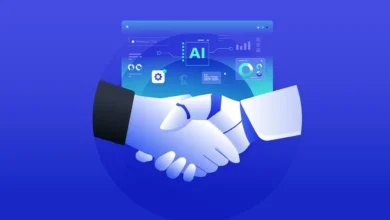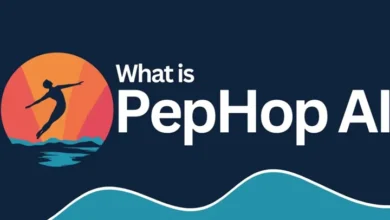Grok AI: Exploring Grok 2, How to Use Grok, and Comparing

Artificial intelligence has transformed the way we go about solving a vast variety of tasks, from automating mundane chores to tackling intricate business issues. Out of the numerous AI platforms being offered today, Grok AI and its recent version, Grok 2, have caught attention for being capable of changing the way we analyze data and aid in an array of handy applications.
What is Grok AI?
Grok AI is a sophisticated artificial intelligence system that has been created to handle and examine big sets of data. Grok” is a term that originated from science fiction and means to get something deeply
and thoroughly. Grok AI would assist users in getting to this extent of knowledge regarding data—business insights, market trends, or
scientific findings. Grok’s fundamental strength is in its capability to reduce intricate datasets into easy-to-understand form and present actionable insights by natural language processing and machine learning algorithms.
Grok 2 is a more powerful version of the original Grok AI platform.
The improvements in Grok 2 offer better data analysis functions, better understanding of unstructured data, and more customization options. It enables users to extract valuable insights from larger and more complex datasets more quickly and with less effort. Although the initial Grok has previously been valuable in business intelligence and analytics, Grok 2 builds on these capabilities and incorporates even more sophisticated features that make it a must-have tool for experts from various
industries such as finance, marketing, and business analysis.
Major Features of Grok 2
Sophisticated Natural Language Processing (NLP): Grok 2 comes with a powerful NLP framework that interprets structured and unstructured data alike.
Whether you’re asking in plain language or ingesting raw data sets, Grok 2 will give you insights that are worth their weight.
Data Visualization: Grok 2 features sophisticated visualization techniques that take complex data and reduce them to basic, easy-to-understand charts, graphs, and other types of visual presentations. Companies use these visual presentations to quickly discern key trends and make informed decisions.
Sentiment Analysis: Another highlight of Grok 2 is that it can carry out sentiment analysis, which can be applied for social media tracking, customer opinion analysis, and so on.It helps companies understand
public opinion, customer satisfaction, and even market moods.
Integration with Other Tools: Grok 2 is better integrated with other business tools, such as CRM tools, marketing platforms, and even machine learning frameworks, and this results in workflows between different software systems smoother.
How to Use Grok AI
Applying Grok AI can be hugely helpful for everyone who wishes to gain insights out of big data.
Whether you are a business analyst, a marketer, or a researcher, Grok AI can help you make more informed decisions in less time. Here is the step-by-step process of using Grok to your advantage:
Accessing Grok AI
Grok AI is found on a number of platforms, including web and mobile. You can create an account through the Grok site or get to it via a partner app. Once you’re logged in, you can use Grok to perform tasks such as data analysis and reporting.
Inputting Data
In order to begin using Grok for data analysis, you need to input your data first. Grok 2 supports various file formats, like CSV, JSON, and Excel. You might ask Grok to give you a summary of last quarter’s financials, generate sales projections, or find any outliers in customer comments.
Asking Questions and Pulling Out Insights
Grok 2 is superior at natural language processing, i.e., you can ask your questions in the same way that you speak. For instance, rather than having to learn certain query languages such as SQL, you can simply type or say: “What were the biggest-selling products during last month?” Grok will process your data and give back an answer in plain English, together with any applicable charts or visualizations.
Grok 2 can respond to sophisticated questions like:
What were the consumer sentiment trends in the past six months?
Can you run the sales data for anomalies?
How do these market variations affect our projected earnings?
Personalizing and Tailoring the Experience
Grok 2 is highly customizable. You can customize the tone of the responses, depth of analysis, and the way data is returned. For instance, if you want brief answers as opposed to in-depth reports, you can have Grok default to summaries. Customization also enables you to create alerts for particular measures or trends that you are interested in, so you never miss any important data.
Visualizing Data
Grok 2 provides you with several data visualization tools to make your datasets easier to comprehend. Whether it is through pie charts, bar graphs, or scatter plots, Grok will automatically create the most appropriate visual
representation of the data that is being examined. Such tools are not only useful to business analysts but also a central component for decision-makers who require quick, easy-to-understand visualizations.
Data Analysis and Recommendations
After analyzing the data, Grok 2 does not just stop. It also gives you actionable suggestions based on its analysis.For instance, Grok might spot a trend in your sales data and recommend ways to take advantage of it. It can also alert you to impending dangers or emerging opportunities in the marketplace.
Grok vs ChatGPT
While Grok AI is a powerhouse in data analysis and business intelligence, it’s not the only AI on the trading floor. Open AI’s Chat GPT, known for its conversational power, is frequently compared with Grok. Both Grok and Chat GPT rely on AI and natural speech processing, but they serve different purposes and are optimized for different types of collaboration.
Purpose and Focus
Grok AI: Grok AI is largely used for the analysis of data, business insights, and insights withdrawal from large data. AI can assist users to comprehend the data in terms of visualizations, reports, and actionable recommendations. Grok is highly useful for finance, marketing, and business analytics professionals.
ChatGPT:
ChatGPT is conversational mode optimized. It is tailored to produce text similar to a human’s as a response to the input provided, and as such, is well-suited for customer service, content generation, brainstorming, and retrieving general information. Although it can respond to factual questions, it does not have a specialty for extensive data analysis like Grok.
Data Handling Capabilities
It is easily integrated into business software for improved workflow management.
Use Cases
Grok AI: Grok is apt for those who need to process large amounts of data and extract meaningful information.
Grok AI: Grok is well-suited to individuals who require the ability to handle vast data and derive important information.
ChatGPT:
It is usually applied in content creation, teaching, and common conversational AI use cases.
It is generally used for content generation, tutoring, and general conversational AI applications.
Integration and Customization
But it does not support the same level of integration functions with data analysis software.
Conclusion
In summary, each of Grok AI and ChatGPT possesses its own merits, and the user must select one of them based on the particular requirements of
the user. Grok AI, especially in its new incarnation, Grok 2, is good at data analysis, visualization, and creating actionable insights.




